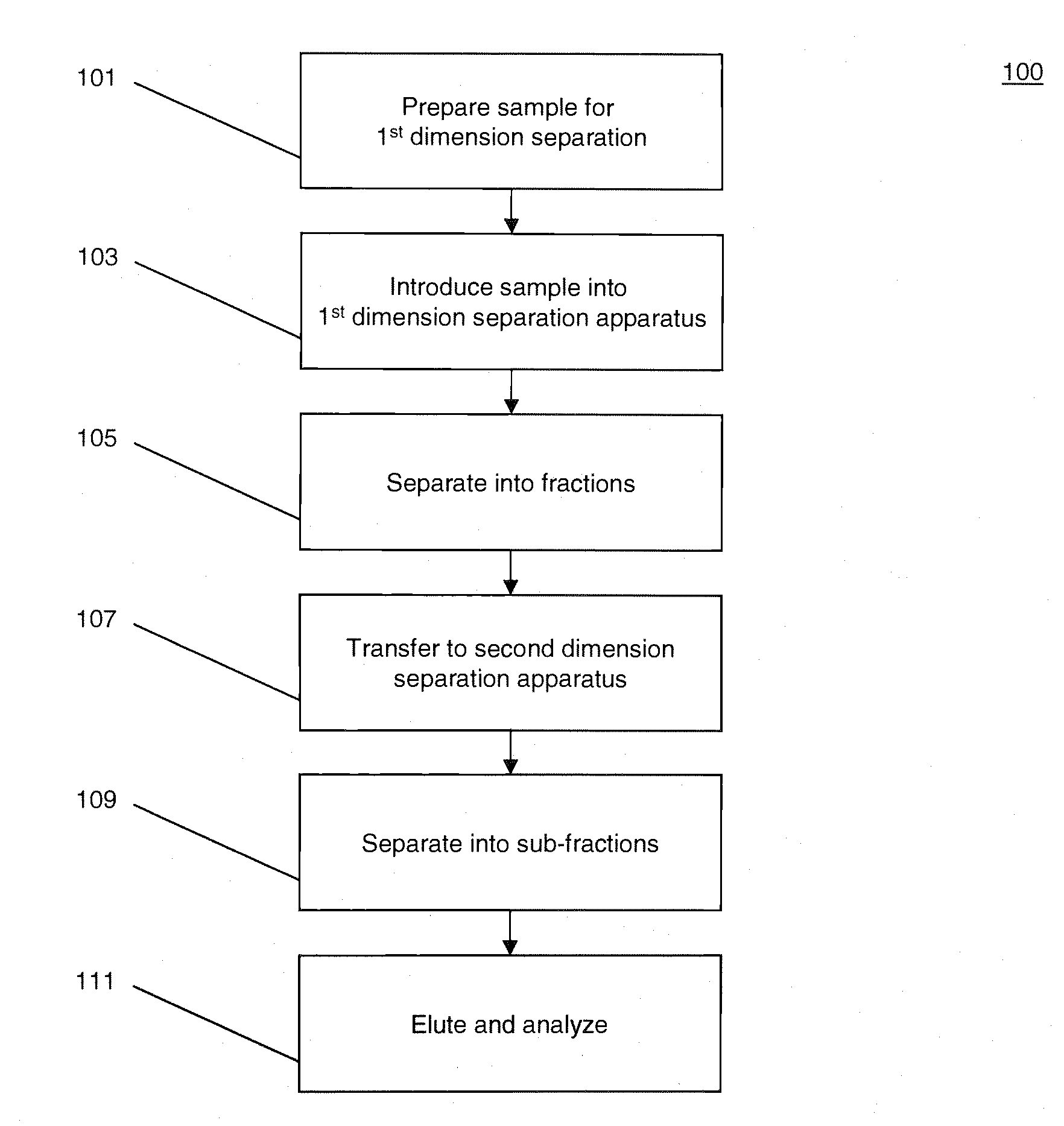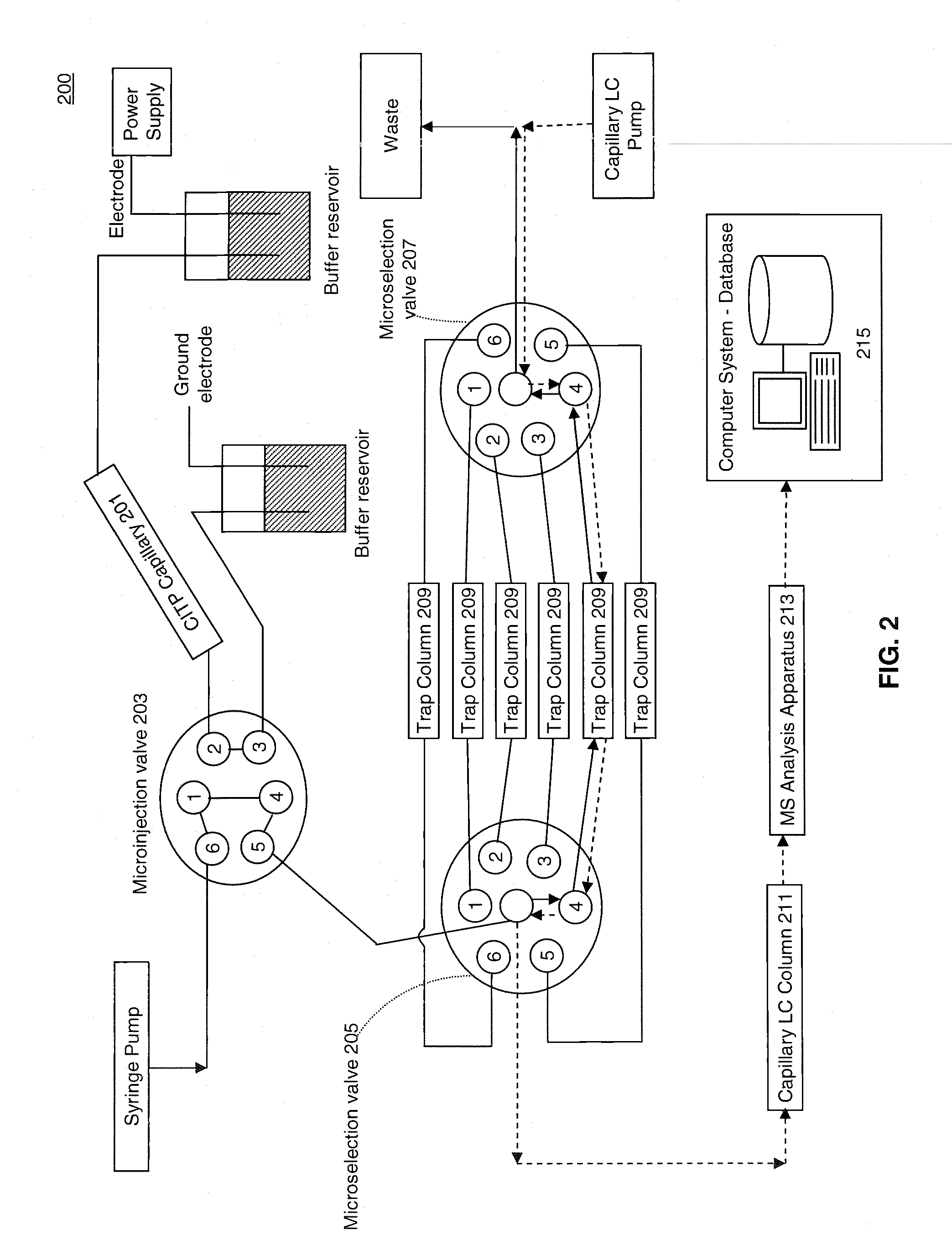Methods and systems for multidimensional concentration and separation of biomolecules using capillary isotachophoresis
a technology of capillary isotachophoresis and multi-dimensional separation, which is applied in the direction of separation process, instruments, chemistry apparatus and processes, etc., can solve the problems of large cellular samples, inability large manual effort and time required to extract sufficient levels of protein, etc., to achieve enhanced low abundance protein analysis, less sensitivity, and greater reproducibility
- Summary
- Abstract
- Description
- Claims
- Application Information
AI Technical Summary
Benefits of technology
Problems solved by technology
Method used
Image
Examples
Embodiment Construction
[0023]FIG. 1 illustrates a process 100 for performing multidimensional separation of heterogeneous biomolecular samples using CITP in the first dimension. An example of heterogenous biomolecular samples as used herein may include a heterogeneous sample of proteins or other peptides such as, for example, those prepared in Jinzhi Chen et al., Capillary Isoelectric Focusing-Based Multidimensional Concentration / Separation Platform for Proteome Analysis, Analytical Chemistry, Vol. 75, No. 13, July 2003.
[0024]Process 100 includes an operation 101, wherein a heterogeneous biomolecular sample may be prepared for multi-dimensional separation and analysis. Operation 101 may include one or more preparation techniques designed to facilitate first dimension separation, second dimension separation, analysis of sample constituents, and / or other operations. For example, if the biomolecular sample comprises a mixture of proteins and / or peptides, the sample may be treated with a detergent such as, fo...
PUM
| Property | Measurement | Unit |
|---|---|---|
| chromatography | aaaaa | aaaaa |
| hydrophobicity | aaaaa | aaaaa |
| mass spectroscopy | aaaaa | aaaaa |
Abstract
Description
Claims
Application Information
 Login to View More
Login to View More - R&D
- Intellectual Property
- Life Sciences
- Materials
- Tech Scout
- Unparalleled Data Quality
- Higher Quality Content
- 60% Fewer Hallucinations
Browse by: Latest US Patents, China's latest patents, Technical Efficacy Thesaurus, Application Domain, Technology Topic, Popular Technical Reports.
© 2025 PatSnap. All rights reserved.Legal|Privacy policy|Modern Slavery Act Transparency Statement|Sitemap|About US| Contact US: help@patsnap.com



